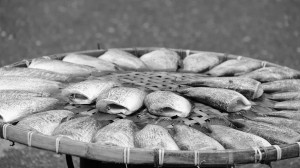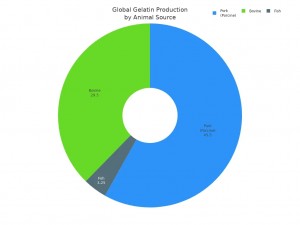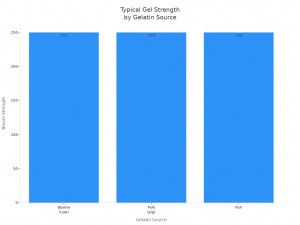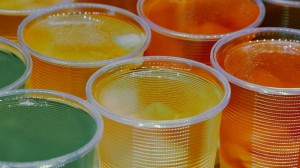
You might notice that Bovine Gelatin Powder stands out in many recipes. Its strong gelling ability and high nutritional value make it a popular choice in Europe and Asia-Pacific.
| Gelatin Source | Market Share (2023) | Key Usage & Regional Insights |
| Bovine | 33.6% | Largest share due to strong gelling capacity and nutritional value; popular in Europe and Asia-Pacific; used in food, supplements, and cosmetics. Asia-Pacific holds 30.78% of bovine gelatin market. |
| Porcine (Pork) | Significant share | Cost-effective and high yield; widely used in food, cosmetics, pharmaceuticals; dominant in regions without dietary restrictions on pork. |
| Fish | Smaller share | Growing niche market, especially in Asia-Pacific (Japan); preferred for sustainable and marine-based products. |

The type of gelatin you use can change the texture and quality of your food. Using the right gelatin helps you get the best results, whether you want a firm jelly or a creamy dessert. Chefs often adjust gelatin types and amounts to match the dish, which improves taste and satisfaction.
Key Takeaways
● Bovine gelatin powder offers strong, stable gels with high nutritional value, making it ideal for firm desserts and savory dishes.
● Fish gelatin creates soft, delicate gels that melt quickly, perfect for melt-in-the-mouth treats and recipes needing gentle texture.
● Pork gelatin provides a firm, elastic gel at a lower cost but may not suit those with religious or dietary restrictions.
● Choose gelatin based on recipe needs, flavor preferences, and dietary or religious requirements to get the best texture and taste.
● Always bloom gelatin in cold water before use and avoid boiling to maintain its gelling strength and smooth texture.
Types of Gelatin: Bovine Gelatin Powder, Fish, and Pork

Bovine Gelatin Powder
You get Bovine Gelatin Powder from the bones and hides of cows. This type of gelatin is popular in many recipes because it creates a strong, stable gel. You will find it rich in amino acids like glycine, proline, and hydroxyproline. These amino acids help give Bovine Gelatin Powder its firm texture and high nutritional value.
Tip: If you want a neutral flavor and a strong set for your desserts or gummies, Bovine Gelatin Powder works well.
Here is a table showing the main amino acid differences among the three types:
| Amino Acid | Bovine Gelatin (%) | Pork Gelatin (%) | Fish Gelatin (%) |
| Glycine | 27 - 30 | 27 - 30 | 21 - 26 |
| Proline + Hydroxyproline | ~25 | ~25 | 17 - 21 |
| Lysine | Low | Low | Slightly higher |
| Histidine | Lower | Lower | Slightly higher |
Bovine Gelatin Powder also contains more phenylalanine, lysine, and histidine than pork gelatin. This gives it a unique nutritional profile.
Fish Gelatin
Fish gelatin comes from the skin and bones of fish. You might choose fish gelatin if you need a product that is not from land animals. Fish gelatin has a different amino acid mix. It contains more serine, threonine, methionine, cysteine, and arginine. These differences make fish gelatin softer and less firm than Bovine Gelatin Powder or pork gelatin.
Fish gelatin works well in recipes that need a gentle set or for people who avoid beef and pork. You may notice a slight marine taste in some dishes.
Pork Gelatin
Pork gelatin is made from pig skin and bones. You will see it used in many foods because it is less expensive than Bovine Gelatin Powder and fish gelatin. Pork gelatin has high levels of glycine, proline, hydroxyproline, glutamic acid, glutamine, and tyrosine. This makes it stable and easy to use in many recipes.
Pork gelatin is the most cost-effective choice.
It gives a strong gel and works well in candies, marshmallows, and jellies.
Note: Pork gelatin is not suitable for people who avoid pork for religious or dietary reasons.
Source and Ex
traction Methods
Animal Origins
You might wonder where gelatin comes from. Most gelatin comes from three main animal sources: pigs, cows, and fish. Producers use different parts of these animals, such as skin, bones, and sometimes scales. The table below shows the main raw materials and how much each animal source contributes to global gelatin production:
| Animal Source | Raw Material Used | Approximate % of Global Gelatin Production |
| Pork (Porcine) | Skin | 45-46% |
| Bovine | Hides and Bones | 29-30% |
| Fish | Skins, Scales, Bones | 1.5-5% |
You can see that pork is the most common source, followed by bovine, then fish. This means that most gelatin you find in stores comes from pigs or cows. Fish gelatin makes up a much smaller part of the market.

Tip: If you have dietary or religious restrictions, always check the label to see which animal source was used.
Extraction Process
To make gelatin, producers first collect the raw materials. They use skin, bones, and sometimes scales. The next step is pretreatment, which prepares the collagen for extraction. For bovine gelatin, producers use an alkaline pretreatment. This step takes several weeks because cow hides and bones have dense connective tissue. For pork and fish gelatin, producers use an acid process. This method works faster because the tissues are less dense.
After pretreatment, the collagen is extracted by heating the materials in water. The process uses a lot of water and energy. On average, making one ton of gelatin uses about 19 cubic meters of water, 22.4 gigajoules of heat energy, and 1,175 kilowatt-hours of electricity. Not all of this energy and water is used efficiently. About 20–30% is wasted, so there is room for improvement in the process.
You can see that the extraction method depends on the animal source. The process also affects the final texture and quality of the gelatin you use in your recipes.
Physical Properties Compared
Gel Strength and Texture
When you choose gelatin for your recipe, gel strength matters. Gel strength tells you how firm or wobbly your dessert or gummy will be. Scientists measure this using the Bloom test. The higher the Bloom number, the firmer the gel.
Here is a table showing the typical Bloom strength for each type:
| Gelatin Source | Typical Bloom Strength Range | Notes |
| Bovine (cow) | 175 - 325 (medium to high) | High bloom gelatin is made from cow collagen; used for firm gels and various food products |
| Pork (pig) | 175 - 325 (medium to high) | High bloom gelatin also made from pig collagen; Type A gelatin from pig skin has higher bloom than Type B |
| Fish | ~250 (high) | Example product with 250 Bloom; fish gelatin has lower gelling and melting points compared to mammalian gelatin |

You will notice that both bovine and pork gelatin can reach high Bloom values. This means you can use them for recipes that need a strong, stable gel. Fish gelatin can also reach a high Bloom value, but it behaves differently in the kitchen.
● Pork gelatin gives you the strongest and most elastic gels. If you want a chewy candy or a firm jelly, pork gelatin works best.
● Bovine Gelatin Powder creates gels with medium to high strength. You get a good balance of firmness and elasticity, making it great for most desserts.
● Fish gelatin forms softer, less elastic gels. These gels melt at lower temperatures and feel more delicate. Some chefs use fish gelatin for recipes that need a gentle set or a quick melt in the mouth.
Texture also depends on the amino acids in the gelatin. Pork and bovine gelatins have more proline and hydroxyproline. These amino acids help the gel hold its shape and stay firm. Fish gelatin has less of these, so its gels feel softer and break apart more easily.
Tip: If you want a dessert that holds its shape on a warm day, choose bovine or pork gelatin. For a melt-in-your-mouth treat, fish gelatin is a good pick.
Melting Point and Solubility
Melting point tells you how much heat a gel can take before it turns back into a liquid. Solubility shows how fast the powder dissolves in water. Both features affect how you use gelatin in cooking.
Here is a table comparing the melting points and solubility of each type:
| Gelatin Type | Melting Point (°C) Powder | Melting Enthalpy (J/g) Powder | Melting Point (°C) Nanofiber | Melting Enthalpy (J/g) Nanofiber | Crystallinity | Solubility Characteristics |
| Bovine | 108 | 124.2 | 63 | N/A | Lower | Higher solubility rate due to lower crystallinity and increased flexibility |
| Fish | 118 | 266.7 | 75 | 78.6 | Lower | Higher solubility rate due to lower crystallinity and increased flexibility |
| Porcine | 110 | 169.8 | 154 | 189.5 | Higher | Lower solubility rate due to higher crystallinity and more ordered structure |

You can see that fish gelatin powder has the highest melting point among the powders. However, when you use it in recipes, fish gelatin gels still melt at lower temperatures than bovine or pork gelatin. This happens because fish gelatin has a different structure and less proline and hydroxyproline.
1.Bovine Gelatin Powder and fish gelatin both dissolve quickly in water. Their lower crystallinity makes them flexible and easy to mix.
2.Pork gelatin has a more ordered structure. It dissolves more slowly, which can help if you want a dessert that releases flavor over time.
If you need a gelatin that sets fast and melts slowly, bovine or pork gelatin is your best choice. If you want a gel that melts quickly in your mouth, fish gelatin works well.
Note: Always check the melting point if you plan to serve your dish warm or at room temperature. This helps you avoid a runny dessert.
Flavor and Odor Differences
Neutrality and Aftertaste
When you use gelatin in your recipes, the flavor and odor can change how your dish tastes. Each type of gelatin brings its own sensory qualities. Taste panels have found clear differences:
| Gelatin Type | Flavor and Odor Characteristics |
| Fish Gelatin | Slightly fishy odor and flavor; delicate and subtle, often paired with seafood dishes. |
| Pork Gelatin | Mild and neutral flavor and odor; subtle and does not overpower other ingredients. |
| Beef Gelatin | Bold and robust flavor and odor; strong and pronounced, suitable for hearty savory dishes. |
You will notice that pork gelatin has a mild and neutral taste. It blends well with most foods and does not leave a strong aftertaste. Fish gelatin has a gentle, slightly fishy note. This flavor is soft and works best in recipes with seafood or light flavors. Beef gelatin gives a bold and robust taste. You may find it more noticeable, especially in savory dishes.
Tip: If you want a dessert with no aftertaste, choose pork gelatin. For recipes with seafood, fish gelatin can enhance the flavor.
Suitability for Delicate Dishes
You want your delicate desserts and clear jellies to taste clean and fresh. The type of gelatin you pick can help you reach this goal.
1.Pork gelatin works best for delicate dishes. Its neutral flavor lets fruit, cream, or floral notes shine.
2.Fish gelatin can suit light or seafood-based desserts. However, you might notice a faint marine taste in very mild recipes.
3.Beef gelatin fits hearty or savory dishes. Its strong flavor can overpower gentle ingredients.
If you plan to make panna cotta, fruit jelly, or mousse, pork gelatin gives you the cleanest result. For aspics or dishes with bold flavors, beef gelatin can add depth. Always match the gelatin type to your recipe for the best taste.
Culinary Uses and Applications

Best Uses for Bovine Gelatin Powder
You will find Bovine Gelatin Powder in many professional kitchens because it works well in both sweet and savory recipes. Chefs use it for its gelling, stabilizing, thickening, and binding abilities. You can try it in these ways:
1.Make desserts like panna cotta, mousse, marshmallows, and jellies. It gives them a smooth, firm, and stable texture.
2.Add it to savory dishes such as terrines, aspics, pâtés, and sauces. It helps bind ingredients and improves mouthfeel.
3.Use it in bakery products to lower fat content and increase moisture. This makes cakes and breads softer and more enjoyable.
4.Create professional finishes like mirror glazes for cakes or perfectly set panna cottas.
When you use Bovine Gelatin Powder, remember to bloom it in cold water before adding it to your recipe. This step helps prevent lumps and ensures a smooth texture.
Tip: Always avoid boiling gelatin. High heat can weaken its setting power.
When to Choose Fish Gelatin
Fish gelatin works best in recipes that need a soft, melt-in-the-mouth texture. It melts at a lower temperature than beef or pork gelatin, so it releases flavors quickly. You might pick fish gelatin for:
| Recipe Type | Why Choose Fish Gelatin? |
| Melt-in-the-mouth candies | Soft texture, quick flavor release |
| Marshmallows and jellies | Delicate set, gentle mouthfeel |
| Kosher-friendly desserts | Fish gelatin is often available as kosher |
| Asian cuisine (e.g., chawanmushi) | Matches subtle flavors, sets at lower temperatures |
You can use fish gelatin in fruit jellies, panna cotta, and other delicate desserts. It also works well in recipes where you want the gelatin to stay soft, even when chilled.
Ideal Uses for Pork Gelatin
Pork gelatin has a long history in both traditional and modern cooking. You will see it in classic dishes like pork jelly and aspic, where it helps encase meats, fish, or vegetables in a clear, firm gel. In modern kitchens, you can use pork gelatin to:
1.Thicken sauces and soups.
2.Make desserts like marshmallows, chocolate mousse, no-bake cheesecakes, and fruit molds.
3.Improve the texture of frozen desserts, so they do not freeze solid.
4.Bind ingredients in meatballs, pâtés, and canned meats.
Pork gelatin is easy to use and gives a strong, elastic set. It works well in both sweet and savory recipes, making it a versatile choice for many dishes.
Dietary, Religious, and Allergen Considerations
Kosher and Halal Options
You need to pay close attention to religious dietary laws when choosing gelatin. Kosher and halal rules affect which gelatin types you can use. Pork gelatin is never halal or kosher, so you must avoid it if you follow Islamic or Jewish dietary laws. Bovine gelatin can be halal or kosher, but only if the cows are slaughtered according to religious guidelines and the product is certified. Fish gelatin is usually accepted by both religions because fish do not require ritual slaughter.
Here is a table that shows the main differences:
| Gelatin Type | Source | Halal Status | Kosher Status | Dietary Restrictions |
| Bovine | Cows and bulls | Halal if slaughtered according to Islamic law | Kosher if slaughtered according to Jewish law | Permissible if certified halal/kosher |
| Fish | Fish (skin or scales) | Generally halal | Generally kosher | Widely accepted for religious compliance |
| Pork | Pigs | Not halal | Not kosher | Forbidden for Muslims and Jews |
Note: Some kosher certifications allow pork gelatin because the extraction process changes its nature, but most halal certifications do not accept it under any circumstances.
Allergen Concerns
Gelatin can cause allergic reactions in some people. You should know that most gelatin comes from pigs or cows, and the proteins in these sources can trigger allergies. If you have a red meat allergy, you might react to both bovine and pork gelatin. Fish gelatin rarely causes allergies, but it can still trigger anaphylaxis in rare cases. Cross-reactivity between mammalian gelatins is high, so if you react to one, you may react to the other. Fish gelatin does not usually cross-react with mammalian gelatin.
1.Gelatin is found in foods, medicines, and vaccines.
2.Allergic reactions can range from mild to severe.
3.Always check ingredient labels if you have a known allergy.
Tip: If you have a gelatin allergy, ask your doctor before eating foods or taking medicines that may contain gelatin.
Vegetarian and Vegan Alternatives
If you follow a vegetarian or vegan diet, you need to avoid all animal-derived gelatins. None of the traditional gelatins—bovine, pork, or fish—fit these diets. You can choose plant-based alternatives such as agar-agar, pectin, or carrageenan. These ingredients come from seaweed or fruit and can create similar textures in desserts and jellies.
1.Agar-agar sets firmly and works well in most recipes.
2.Pectin is best for jams and fruit gels.
3.Carrageenan is often used in dairy products.
You can find many recipes online that use these alternatives for vegan-friendly treats.
Choosing the Right Gelatin for Your Needs
Recipe-Specific Recommendations
You want your recipes to turn out just right. The type of gelatin you choose can make a big difference in texture, flavor, and appearance. Each gelatin type has its own strengths:
1.Fish gelatin sets at lower temperatures and creates a soft, delicate texture. You might use it for fruit jellies, panna cotta, or other light desserts. Its gentle flavor works well in sweet and delicate recipes.
2.Pork gelatin gives a firm, elastic set and a mild, neutral taste. You can use it for traditional dishes like pâtés, terrines, or marshmallows. It works well in both sweet and savory foods.
3.Beef gelatin (from cows) offers the strongest set and a bold, robust flavor. You may prefer it for hearty, savory dishes such as jellied beef or stews that need a very firm texture.
Tip: Always match the gelatin’s strength and flavor to your recipe. Softer desserts need gentle gels, while firm dishes need stronger ones.
Dietary and Lifestyle Factors
Your dietary choices and lifestyle can guide your gelatin selection. Some people avoid animal products for religious, ethical, or health reasons. Here are some things to consider:
1.If you follow a vegetarian or vegan diet, you should look for plant-based alternatives like agar-agar or pectin.
2.Religious dietary laws, such as halal or kosher, may prevent you from using pork or non-certified beef gelatin. Fish gelatin is often accepted in these cases.
3.Allergies to animal proteins can make traditional gelatin unsafe. Plant-based gels are a safer choice for those with allergies.
4.Many people now choose vegetarian capsules and gels because of health, ethical, or religious beliefs. These options are becoming more popular, even though they may cost more.
You should always check labels and certifications to make sure the gelatin fits your needs.
Summary Comparison Table
Here is a quick table to help you compare the main features of each gelatin type:
| Property / Type | Beef Gelatin | Pork Gelatin | Fish Gelatin |
| Amino Acid Composition | High glycine, proline, hydroxyproline | Similar to beef, rich in glycine and proline/hydroxyproline | Lower glycine, proline, hydroxyproline |
| Gel Strength (Bloom) | High (200-300 Bloom) | Moderate to high (150-250 Bloom) | Low (50-150 Bloom) |
| Solubility | Good in hot water | Good in hot water | Lower at high temperatures |
| Flavor & Odor | Slight meaty flavor | Minimal flavor interference | Slight fishy/marine flavor |
| Texture | Softer gel, good elasticity | Firm and elastic gel | Softer, weaker gel, gels faster |
| Melting Properties | Moderate melting point, slow dissolution | Higher melting point, slow dissolution | Lower melting point, fast dissolution |
| Shelf Life Stability | Good with proper storage | Good, resistant to environment | Poorer, sensitive to humidity and temperature |
| Suitability | Jellies, candies, thickener, stabilizer | Food and pharma needing clarity/moderate strength | Softer texture, rapid gelation, halal foods |
This table can help you quickly decide which gelatin fits your recipe, dietary needs, and taste preferences.
You have many options when choosing gelatin for your recipes. Pork and bovine gelatin both offer strong, clear gels, but pork gelatin faces religious restrictions while bovine gelatin may have regulatory limits in some regions. Fish gelatin melts faster and suits diets with more restrictions.

When baking or making desserts, consider these factors:
1.Moisture retention and texture stability keep cakes fresh and soft.
2.Gel strength and melting point affect mouthfeel and appearance.
3.Dietary needs and religious rules may guide your choice.
Choose the gelatin that matches your recipe and personal needs for the best results.
FAQ
What is the best way to dissolve gelatin powder?
You should sprinkle gelatin powder over cold water and let it sit for a few minutes. This process is called blooming. After blooming, gently heat the mixture until the gelatin dissolves completely. Avoid boiling, as high heat weakens its gelling power.
Can you substitute fish gelatin for bovine or pork gelatin?
You can substitute fish gelatin in most recipes. Fish gelatin sets softer and melts at a lower temperature. Adjust the amount if you want a firmer texture. Always check for flavor differences, especially in delicate desserts.
Is gelatin safe for people with food allergies?
Most people can eat gelatin safely. If you have a meat or fish allergy, you should avoid gelatin from those sources. Plant-based alternatives like agar-agar offer a safer choice for people with allergies.
How do you store gelatin powder for best results?
Store gelatin powder in a cool, dry place. Keep it in an airtight container to prevent moisture from clumping the powder. Proper storage helps maintain its gelling strength and extends shelf life.
Does gelatin have any nutritional benefits?
Gelatin provides protein and amino acids like glycine and proline. These nutrients support skin, joint, and gut health. You can add gelatin to your diet for extra protein, but it should not replace other protein sources.
Post time: Aug-14-2025